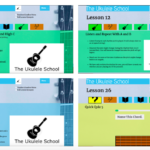Improviation - Composition in the moment
Improvisation is the art of playing music without it having been written down or memorised. In many ways, it is one of the most creative aspects of music as it allows for direct expression through an instrument.
When we think of improvisation, it conjures up the image of a jazz club with a saxophone wailing over a set of complex chords. Many people have only played music from the written page and seldom need to improvise, this can cause anxiety when they have to, or if they want to incorporate improvisation into their teaching.
You improvise everyday.
We are all excellent improvisers and we do it every day – when speaking. We think of what we want to say and then we use our system of language to express it. Within these spoken words are vocabulary, grammatical rules and other language concepts. What is interesting and where the creativity lies, is that each person has their own unique way of expressing themselves verbally. Try this experiment; how many ways can you think of to to say that you are hungry or to answer the question ‘where will you be in five years time?’ As you respond to this you are improvising.
Baby steps
Improvisation, just like language, should begin with imitation. We are always asking our students to clap rhythms, or play pitches. Early improvisation can just be selecting which learnt rhythm to play. Consider this exercise; students learn three rhythmical patterns, which can be used as an answer to a musical question. Each student can answer the question using one of the three rhythms. This simple choice is a valid form of improvisation.
We can now add pitches to these rhythms from a small pool of notes (even 2 notes gives a vast number of variations). This allows each student to play their own unique music. The next step is to vary these three rhythms. We use a simple three part rule when teaching improvisation.
- Remove a note – in other words adding a rest.
- Add a note – eg. making a crotchet into two quavers.
- Move a note – leave the rhythm as it is, but change the pitch of one note.
This early improvisation is key to building confidence when composing melodies. Who knows, with enough encouragement, you could have the next John Coltrane in your classroom…
What some more ideas?
Here is a video lesson from us, showing three quick ideas you could use in your own lessons to help teach improvisation.
This is just a short introduction to teaching improvisation, we are working on more in-depth materials on improvisation in the classroom and would love to hear your ideas.
Please feel free to comment below, subscribe and comment on youtube, or join our facebook page or group for further discussion.
More from The Ukulele School

